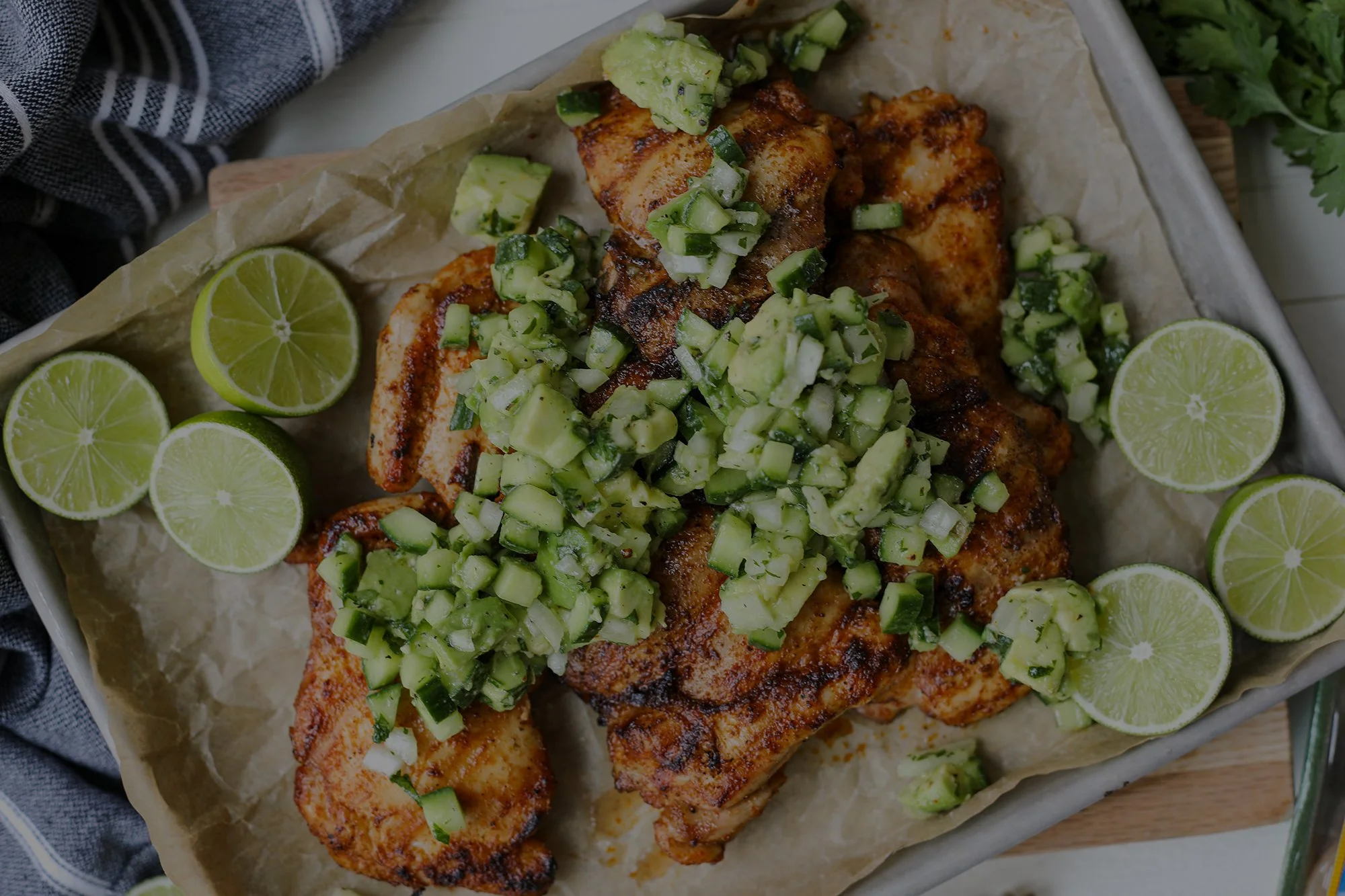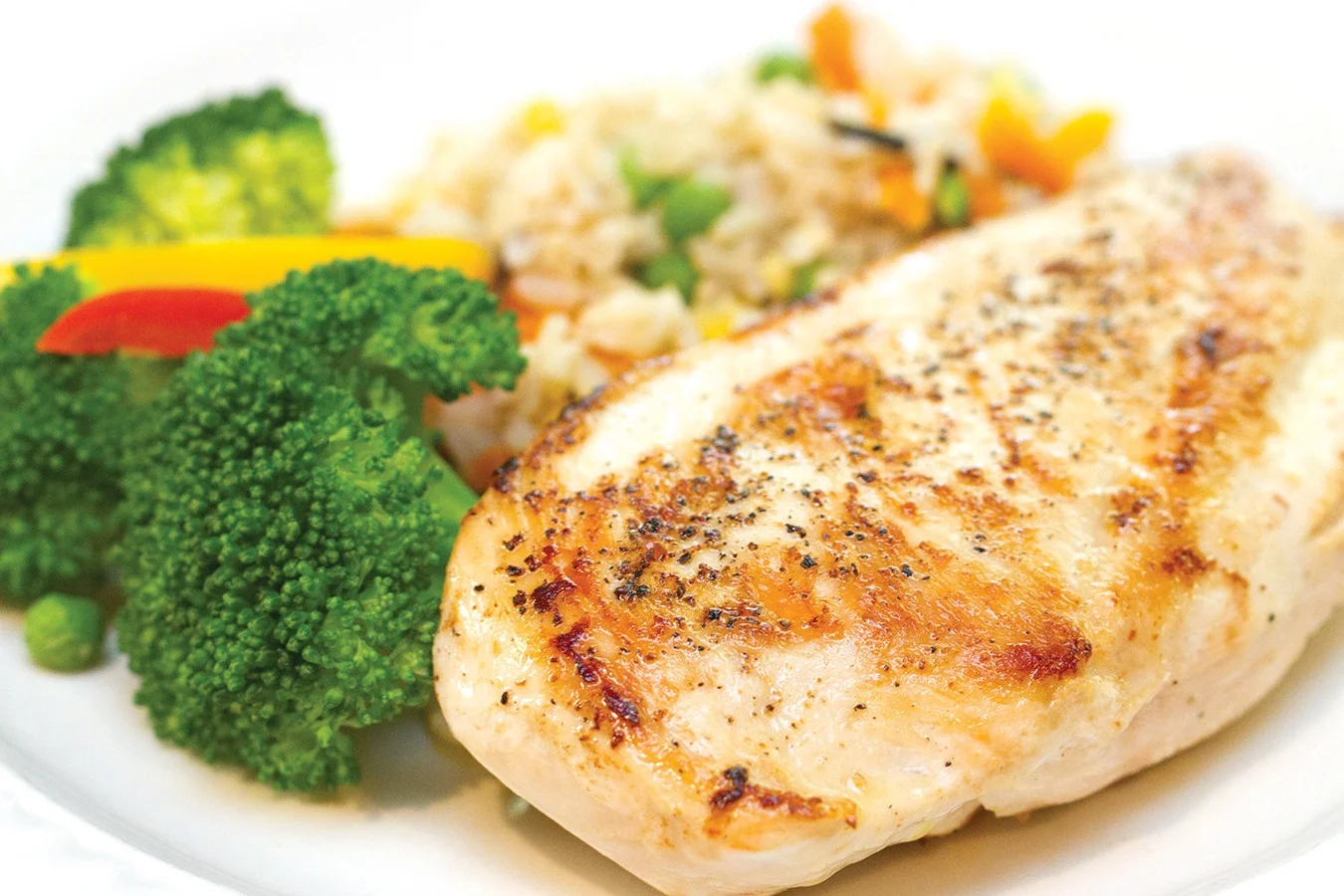Time, Temperature and Technique
The rich, smoky flavor the grill imparts enhances the taste and texture of any cut of chicken. We’ve compiled a few tried-and-true guidelines to get you grilling, no matter if you’re planning to grill a batch of wings or the whole bird.
Boneless Skinless Chicken Breasts
Time: 5 to 6 minutes per side
Temperature: Medium-high (400˚F)
Best technique: Cook over direct heat until 165˚F
Chicken Tenders
Time: 2 to 3 minutes per side
Temperature: Medium-high (375˚F)
Best technique: Cook over direct heat until 165˚F
Chicken Wings
Time: 15 to 20 minutes
Temperature: Medium (350˚F)
Best technique: Cook over direct heat and turn regularly (3 minutes on each side until 165˚F)
Drumsticks
Time: 30 minutes
Temperature: Medium-high (400˚F)
Best technique: Cook over direct heat, rotating every few minutes until 165˚F
Thighs (Bone-In)
Time: 30 to 40 minutes
Temperature: Medium-high (400˚F) for direct heat, medium-low (300˚F) for indirect heat
Best technique: Sear chicken skin side down over direct heat until golden brown, about three minutes. Flip and sear for another three minutes; transfer to indirect heat and continue grilling, rotating and flipping occasionally until 165˚F.
Boneless Skinless Thighs
Time: 7 to 8 minutes per side
Temperature: Medium-high (375˚F)
Best technique: Cook over direct heat until 165˚F
Whole Chicken
Time: 50 minutes
Temperature: Medium-high (375˚F)
Best technique: Butterfly the chicken (spatchcock) by cutting out the backbone. Position the chicken skin side up over indirect heat and turn once during cooking. For best results, put foil-covered brick or cast iron skillet on top to flatten the chicken and encourage even cooking.
Skip the Guesswork
Using a digital meat thermometer is the best way to ensure chicken on the grill has reached the safe minimum temperature of 165˚F. Insert thermometer into the thickest portion of the cut, avoiding any bones, to get the most accurate temperature. When the chicken has reached a safe temperature, remove from the grill, cover, and let rest for five minutes before slicing or serving to let the juices reabsorb into the meat.
Use Direct and Indirect Heat
Temperature control is essential when grilling chicken. For cuts that require longer grilling times, such as a whole chicken or dark meats like drumsticks and thighs, you’ll need both direct and indirect heat zones on your grill. Indirect heat cooks foods slower and more evenly by using the heat from the grill without direct exposure to the fire and flames, which can burn chicken cuts that require longer cook times. Grilling only on direct heat zones is generally better for smaller chicken portions, like chicken breasts, tenders, and wings, which are less than a few inches thick.
Basting and Saucing Tips
From barbecue sauce to pesto, the sugar content in most sauces makes them easy to scorch, so wait to baste or add sauce until near the end of grilling. A good rule of thumb is to wait until the thermometer hits 160˚F to add a sauce high in sugar content. After saucing or basting, it’s best to grill on an indirect heat zone to finish without burning.






